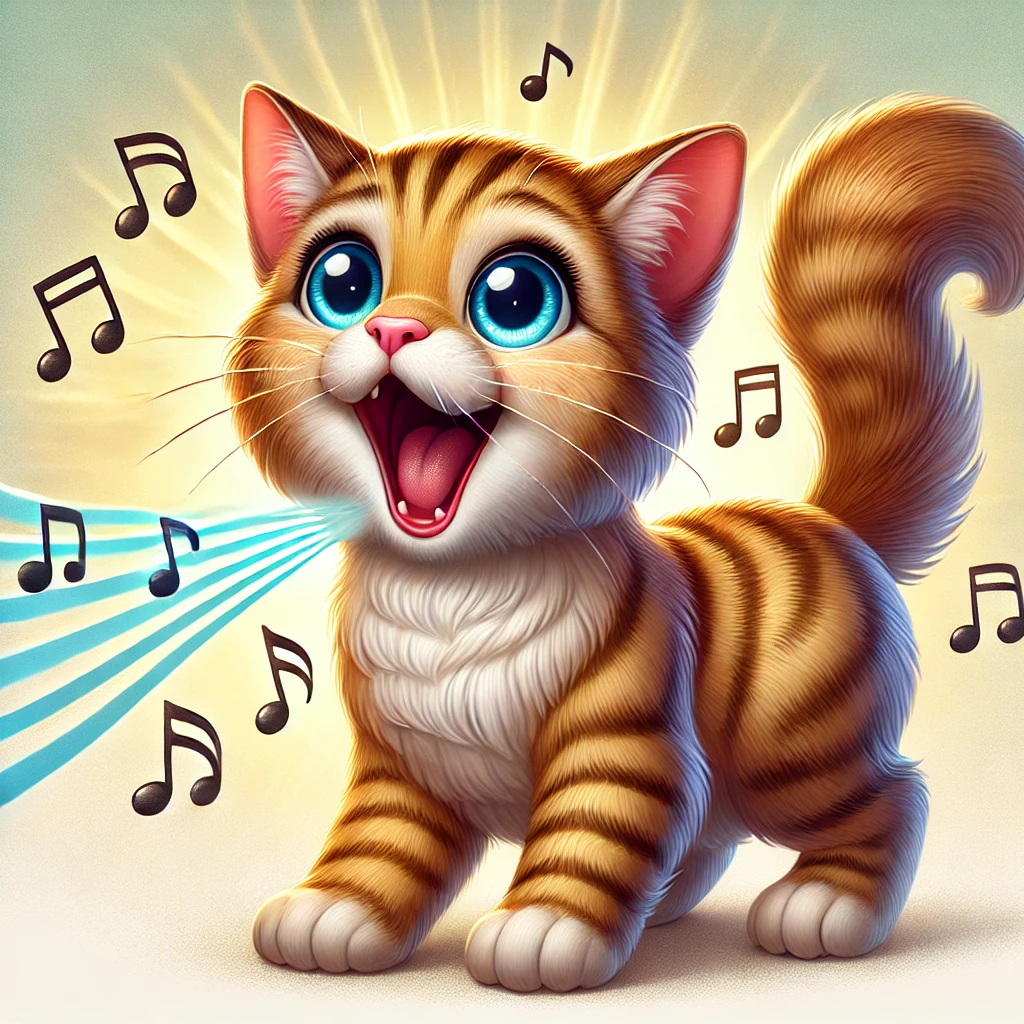Unlock the secrets behind your cat’s charming chirps and trills to strengthen your bond.
Introduction
Have you ever noticed your cat making delightful sounds that are different from the usual meows? These friendly feline vocalizations, known as chirps and trills, are a fascinating aspect of cat communication. Understanding why your cat makes these sounds can help you better connect with them and respond appropriately. In this article, we’ll explore the charm of these friendly feline sounds, when and why cats chirp or trill, how they differ from meows, and how you can encourage positive communication through your responses.
Situations When Cats Chirp or Trill
Expressing Excitement and Anticipation
One of the most common reasons cats chirp or trill is to express excitement or anticipation.
- Bird Watching: When your cat is gazing out the window at birds or squirrels, they might emit chirping sounds. This is often a sign of their hunting instincts kicking in.
- Greeting You: Cats may chirp when you arrive home, showing their happiness to see you.
- Playtime: If your cat is eager to play, they might trill to get your attention.
Mother-Kitten Communication
Chirping and trilling are also significant in mother-kitten interactions.
- Guidance: Mother cats use trills to call their kittens and guide them.
- Affection: These sounds help strengthen the bond between mother and offspring.
Seeking Attention
Your cat may chirp or trill to grab your attention.
- Follow Me: Trilling can be a way of saying “come with me” or “follow me” to show you something.
- Requesting: They might be asking for food, petting, or to be let outside.
Understanding these situations can help you interpret what your cat is trying to communicate.
How These Sounds Differ from Meows
Characteristics of Chirps and Trills
Chirps and trills have distinct features that set them apart from meows.
- Sound Quality: Chirps are short, high-pitched sounds, while trills are rolling “R” sounds produced by the tongue.
- Duration: They are usually brief and may be repeated in quick succession.
- Intonation: These sounds are often more melodic and expressive.
Purpose of Meows vs. Chirps and Trills
- Meows: Generally used to communicate with humans, expressing needs like hunger or discomfort.
- Chirps and Trills: Often indicate positive emotions such as excitement, affection, or a desire for interaction.
Body Language Accompanying Sounds
- Chirps and Trills: Usually accompanied by upright ears, alert eyes, and a relaxed tail.
- Meows: Body language can vary widely depending on the context.
By recognizing these differences, you can better understand your cat’s emotions and needs.
The Role of Chirps in Human-Cat Interaction
Strengthening the Bond
Responding to your cat’s chirps and trills can enhance your relationship.
- Engagement: Acknowledge their sounds with attention, petting, or verbal responses.
- Communication: Mimicking their trills can sometimes encourage further interaction.
Encouraging Positive Behavior
- Interactive Play: Use toys to engage them when they chirp during playtime.
- Affectionate Response: Petting or cuddling when they trill as a greeting reinforces their friendly behavior.
Understanding Their Needs
- Observation: Pay attention to what they might be trying to show you when they chirp or trill.
- Meeting Requests: If they’re leading you to an empty water bowl or food dish, address the issue promptly.
Recognizing and responding to these friendly sounds fosters a deeper connection with your cat.
Encouraging Positive Communication Through Response
Be Attentive
- Active Listening: Give your cat your full attention when they communicate.
- Eye Contact: Maintain gentle eye contact to show you’re engaged.
Verbal Acknowledgment
- Soft Responses: Speak to them in a calm, soothing voice.
- Mimicry: Try imitating their chirps to encourage more interaction.
Physical Interaction
- Petting: Gently stroke them if they seem receptive.
- Playtime: Engage in interactive play if they appear energetic.
Create an Enriching Environment
- Stimulating Toys: Provide toys that satisfy their hunting instincts.
- Window Views: Give them access to windows where they can watch birds safely.
Explore engaging toys for your cat
Consistency
- Routine: Maintain a consistent schedule for feeding and playtime.
- Positive Reinforcement: Reward them for positive communication.
By actively responding, you encourage your cat to continue using these friendly vocalizations.
Conclusion
Understanding your cat’s chirps and trills opens up a new level of communication between you and your feline friend. Recognizing when and why they make these sounds allows you to respond appropriately, strengthening your bond. Whether they’re expressing excitement, seeking attention, or simply greeting you, these friendly feline vocalizations are a charming aspect of their personality. By encouraging positive communication through attentive responses, you enhance your relationship and ensure your cat feels heard and loved.






